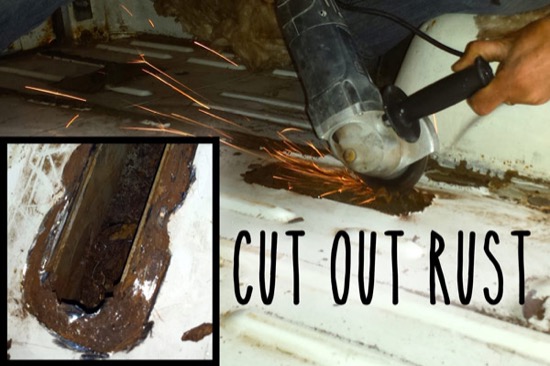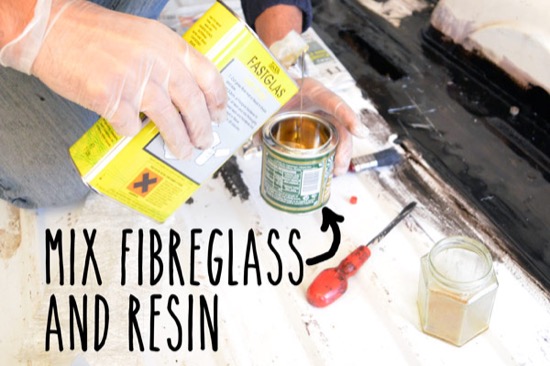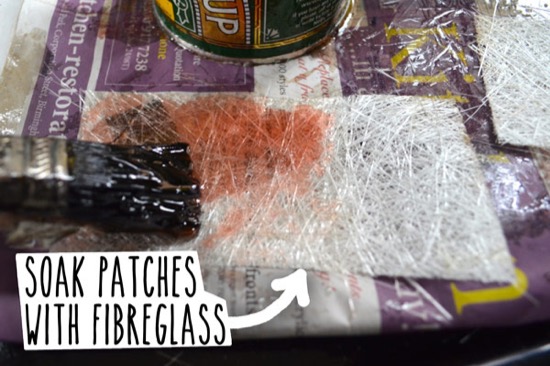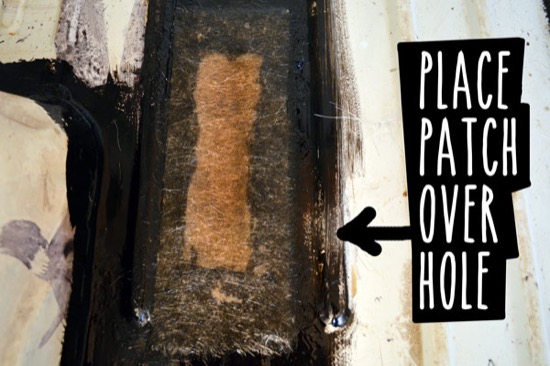It’s pretty normal to find rust has eaten right through the metal bodywork of a van that is more than a few years old. But most of the time it’s not as bad as it looks, and can most likely be repaired with fibreglass resin and patches.
Assuming the holes are not impairing the structural integrity of the vehicle, then it is probably safe repairing it with just fibreglass–without going near a welder. But if there is a hole in the floor that is big enough to put your fist through, and it’s near to a main chassis member, then it may need welding. If you are unsure about whether or not something needs welding, get someone at a garage to have a look at it–preferably the guy who will be doing your MOT.
In my van I had a few holes in the floor that I repaired using fibreglass resin and patches. I’ll go through how I did it in 5 steps.
See my recommended products for van preparation – Note: these are affiliate links, which means you’ll be helping me if you buy using these links. Thank you!
1. Remove rust
After removing the loose paint and loose rust, I cut away any week edges of the metal to give the fibreglass a good solid surface to bond to.

2. Apply rust treatment
I applied rust treatment (this one) to convert any remaining rust before putting the fibreglass on. You can also paint at this stage also, but not really necessary.
3. Prepare fibreglass resin
I prepared the fiberglass (this one) by mixing the resin and the hardener, as directed on the bottle. It’s a good idea to only make up a small amount of fibreglass resin at a time because it starts to thicken and set very quickly–you have to work fast.
Note: you definitely need to wear gloves when working with fibreglass. This stuff is really difficult to get off your hands when it sets.

4. Prepare fibreglass patches
I cut out rectangles of the fibreglass matt and soaked them with the fibreglass resin and hardener solution using brush.

5. Place patches
If the hole is more than a few cm (like in my example) you can apply more than one patch. I used 3 patches–each one with more fibreglass than the last. You may need to dab some more resin around the edges of the patch to keep it held down. It’s also better, if applying more than one patch, to wait after each one has set hard so that it doesn’t sag in the middle.

Things I learnt:
- the power of rust should not be underestimated. It ruins everything and can render a vehicle worthless if neglected.
- the fibre glass patches will take ages to dry causing it to sag if too little hardener is used. I shall not skimp on hardener next time
- fibre glass resin does not come off hands. Gloves next time
- rust gets in eyes. Glasses next time
- the most important one: there is always more rust!








